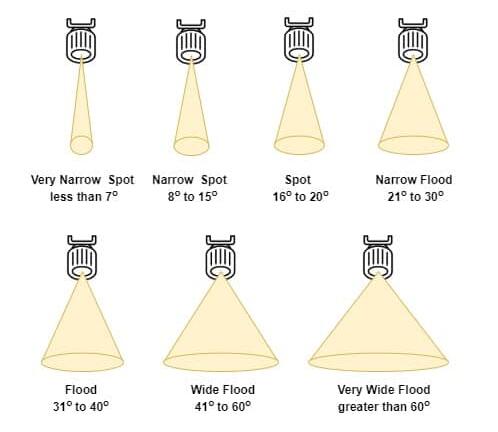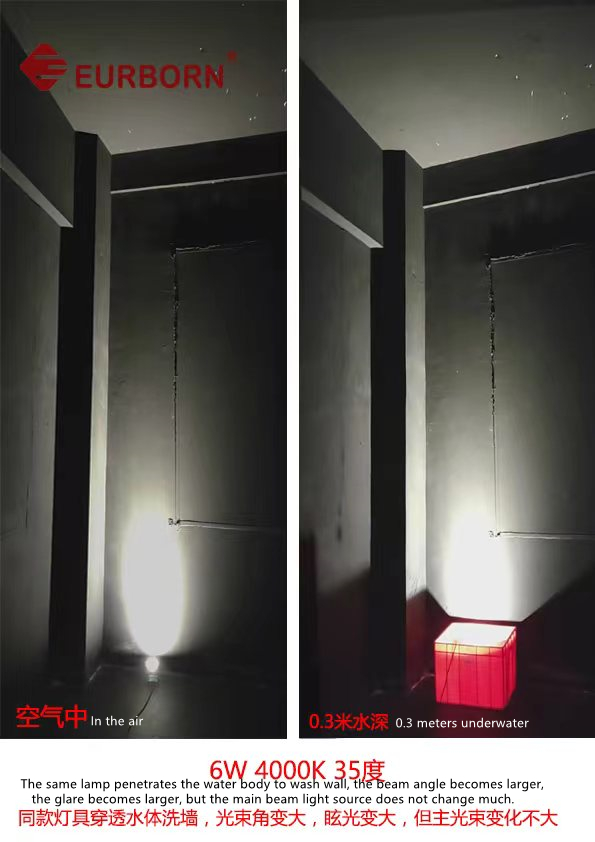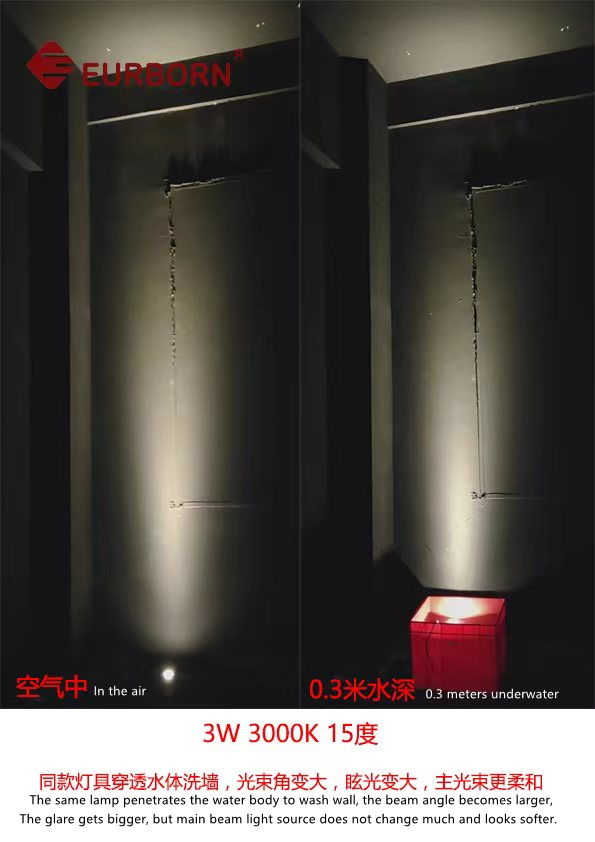Are bigger beam angles really better? Is this a good lighting effect? Is the beam stronger or weaker? We have always heard some customers have this question. EURBORN's answer is: Not really.


At the same time, many of our customers are curious about the fact that if our IP68 stainless steel underwater lighting are installed underwater, what will be the same changes and effects of the light and spot of the same lamp that penetrates the water and washes the wall? We have done an experiment here to give you a more intuitive experience visually. Please see Eurborn underwater lighting GL140
I: Each luminaire has an adapted beam angle.
The beam angle reflects the spot size and light intensity on the illuminated wall. If the same light source is used in reflectors with different angles, the larger the beam angle, the smaller the central light intensity and the larger the spot. The same applies to the principle of indirect lighting. The smaller the beam angle, the greater the ambient light intensity and the worse the scattering effect.
The size of the beam angle is affected by the relative position of the bulb and lampshade. In addition, the angle contained in the direction of the luminous intensity equal to 1/2 of the peak light intensity is defined as the beam angle. Generally speaking, narrow beam: beam angle <20 degrees; medium beam: beam angle 20~40 degrees, wide beam: beam angle> 40 degree.
II: The same light source can produce light spots of different sizes after buckled with different types of lamp cups. If we scatter a ray from the lamp body to the edge of the spot, the angle formed between the line and the lamp is the beam angle.
In living spaces, museums, exhibition halls and other places, it is often necessary to use lights to create a three-dimensional sense of exhibits or artworks, and the beam angle has an essential weight in creating a three-dimensional sense of objects. If the beam angle of the lamps is wrong, the shadow and stereoscopic intensity of the exhibits will be completely different.


According to the above pictures, we can clearly see that the same lamp penetrates the water body and washes the wall, the beam angle becomes larger, and the glare also becomes larger, but the main beam does not change significantly but is softer. The picture shows the static effect, let's see what the dynamic effect looks like?
Post time: Oct-19-2022




